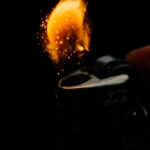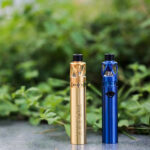Encountering a dry or burnt hit is like hitting a sour note during an enjoyable melody, and it has the potential to disrupt your vaping experience with its unpleasant taste or harsh throat impact. You’re seeking answers as to why you might be faced with such an abrupt and bitter interruption—be it from not properly maintaining your coil, using improper e-liquid amounts, or selecting unsuitable settings for vaping. This piece will delve into these issues in detail, equipping you with the necessary insight to avoid these distasteful mishaps and consistently enjoy a seamless and tastefully rich vape session.
Key Takeaways
- Burnt hits are caused by coil overheating, insufficient e-liquid, and wicking material issues, leading to a nasty taste and possible damage to the coil.
- Dry hits occur due to insufficient saturation of the wick, difficulties with high VG e-liquids, and incorrect vaping techniques, resulting in a harsh throat sensation and burnt taste.
- Preventing and troubleshooting burnt and dry hits involves proper coil priming, wattage control, regular maintenance, adjusting vaping habits, and potentially exploring different coil types or pod systems.
The Anatomy of a Burnt Hit
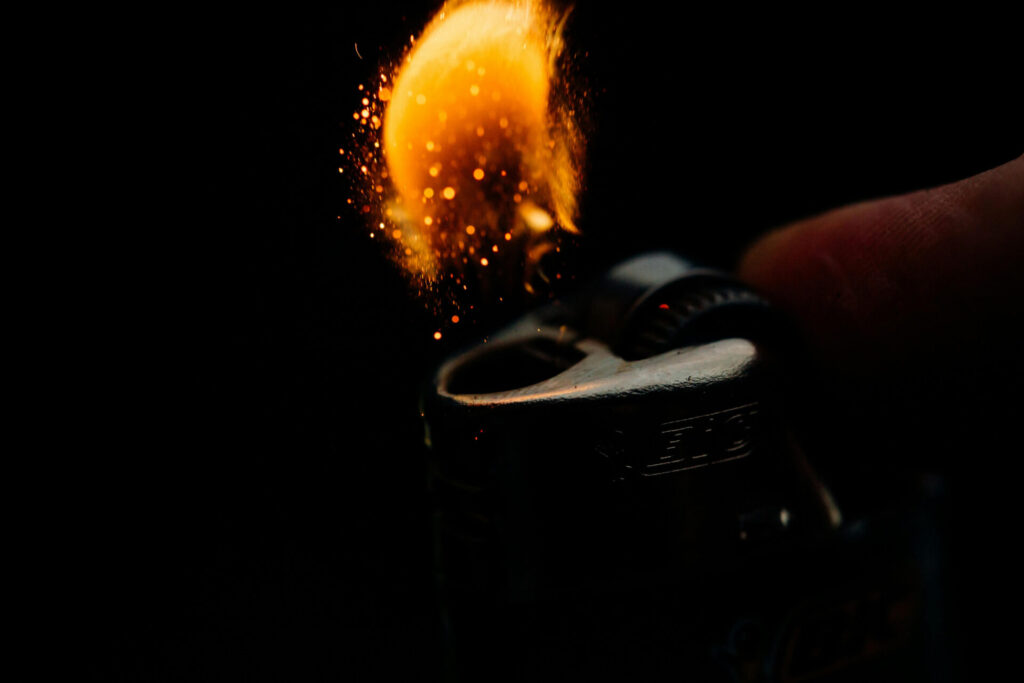
A burnt hit can be equated to a poor performance spoiling an excellent theatre production, originating from three primary offenders: the coil becoming too hot, running out of e-liquid, and issues with the wicking material. These elements each contribute distinctively to the unpleasant experience of a burnt hit. It’s time to expose these antagonists that play critical roles in this unfortunate scenario.
Coil Overheating
When likened to a performer, the coil’s toughest test appears to be coping with overheating. Elevating the wattage excessively or engaging in rapid succession puffing—known as chain vaping—often leads to the coil becoming too hot. Once it reaches such high temperatures, there’s a risk of scorching the wicking material within, which leaves you with both a burnt-out coil and an unpleasantly charred flavor during your vape sessions. Should you detect that unmistakable burnt taste while vaping, chances are it stems from an overworked coil.
This scenario could be equated to watching an accomplished actor falter mid-performance.
E-Liquid Depletion
When the e-liquid runs low, akin to an oversight by a stagehand failing to switch the scenery, it can result in the wick drying out and getting burnt. This creates an unpleasant burnt taste during vaping, reminiscent of a play proceeding without its essential backdrop – a key element is conspicuously absent.
Wicking Material Woes
Let’s not overlook the role of the wicking material, a crucial yet often understated performer in this scene. The absorption efficacy of e-liquid is largely influenced by the kind of wick employed. Should it fail to match pace with the coil’s heat, there’s an imminent risk that it will burn, resulting in an unpleasant climax known as a burnt hit.
Dry Hit Dynamics
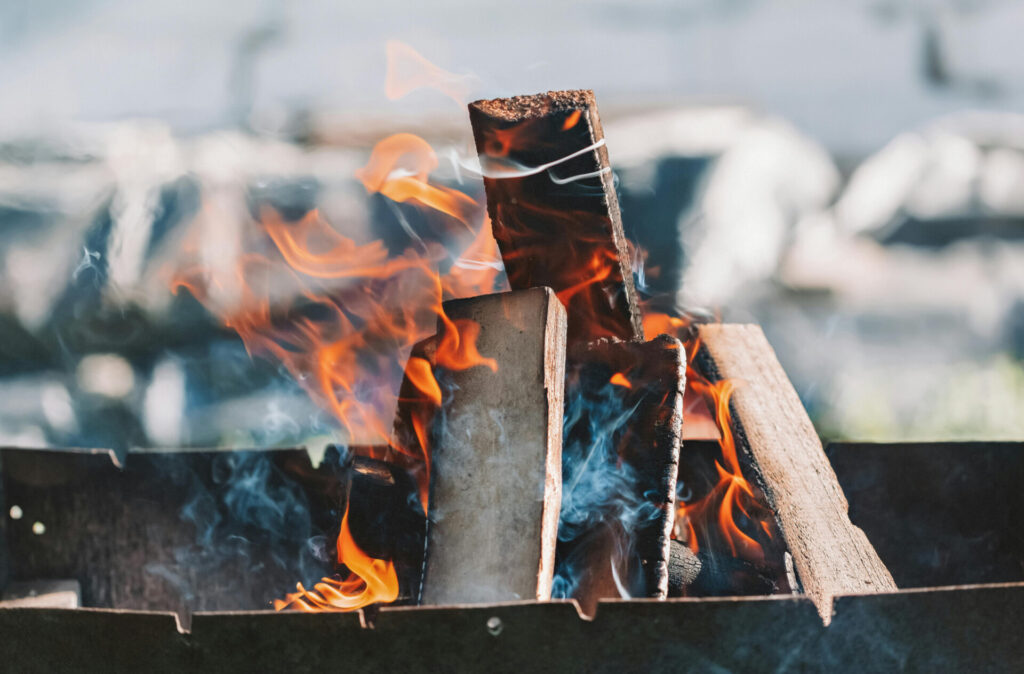
Having grasped the nature of a nasty burnt hit, let’s consider its similarly troublesome relative—the dry hit. This unpleasant occurrence is defined by its distasteful flavor and harsh feeling in the throat that reminds one of cigarette smoke inhalation. Dry hits are unfavorably received due to poor saturation or difficulties arising with high VG e-liquids, resulting in vapor that tastes burnt.
Insufficient Saturation
Consider a wick that hasn’t been completely soaked in e-liquid to be similar to an unprepared understudy. The outcome is likely to disappoint, resulting in a dry hit. Just as thorough rehearsal is crucial for a good performance, ensuring full saturation of the wick is key to avoiding such undesirable occurrences.
High VG E-Liquids Challenges
Vape juice with a high VG content presents a unique challenge akin to executing a difficult script. Their viscosity is greater, causing the wicking process to decelerate and potentially resulting in dry hits when used at elevated wattages or with coils that don’t suit them.
This situation can be compared to performing an intricate monologue. It demands appropriate conditions and thorough preparation for flawless delivery.
Vaping Frequency and Technique
Similarly to how an actor must focus on the delivery and timing of their lines, vapers should also fine-tune their vaping practices. To do so, consider these suggestions.
- Opt for brief puffs that are spaced out
- Employ the proper technique for inhaling
Such measures can avert excessive heating while keeping the wick well-saturated, thus minimizing the likelihood of experiencing dry hits.
Recognizing the Signs of Coil Damage
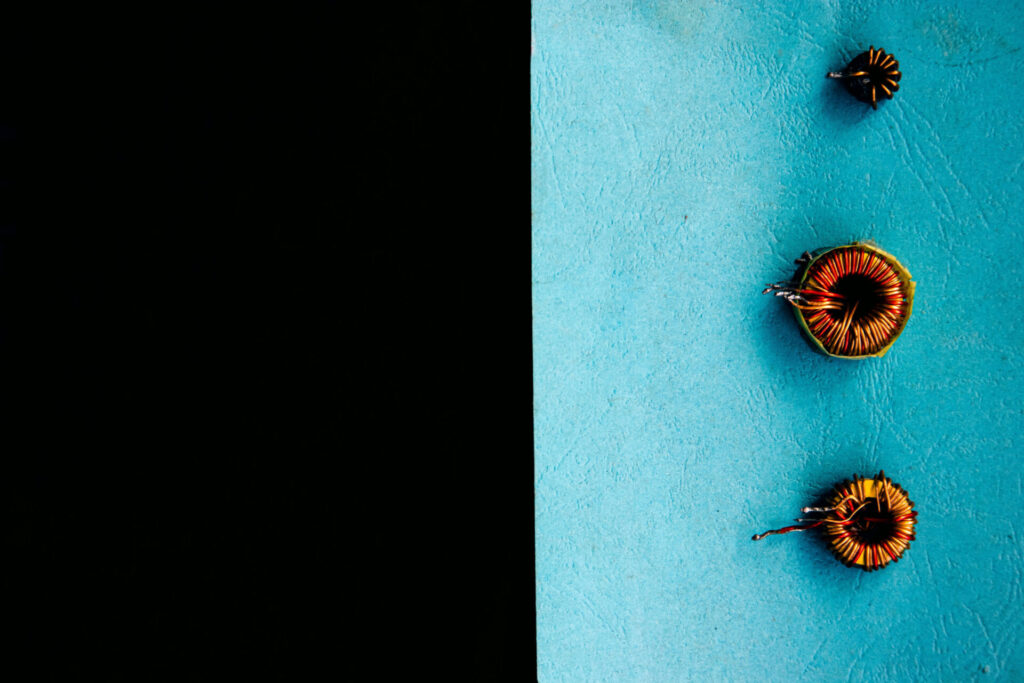
A damaged coil can be compared to a technical glitch in the middle of a live show – it has the potential to spoil the whole event. But what are the indicators that your coil is nearing an unfortunate breakdown? It’s important we recognize these warning signals.
Visual Inspection Clues
Inspecting your coil visually can reveal numerous hints, akin to observing a dress rehearsal. Signs that a coil is approaching the end of its lifespan include buildup of debris and a wick that has become discolored. This is similar to noticing a prop fail before the real show begins.
Taste and Vapor Production Changes
When you notice a shift in your e-liquid’s flavor or a decrease in the vapor output, it’s like an actor messing up lines or skipping parts on stage – these are signs that there may be an issue with your coil. It signals that it might be time for your coil, much like a lead performer, to take a rest.
Audible Alerts: Gurgling Sounds
Gurgling noises act as an early indicator, much like when an actor misses their cue, suggesting that your coil may be compromised. This is akin to an actor flubbering their lines during a performance – it’s a definitive alert that there’s a problem at hand.
Suffering from burnt hits or dry puffs? Don’t let these vaping woes ruin your day! Check out our tips to get your vape back on track. Plus, grab exclusive Eightvape promo codes at Treec Vapours to stock up on your favorite e-liquids and coils for a smooth vape experience!
Extending Your Coil’s Lifespan

Having grasped how to identify a deteriorating coil, we should now focus on methods that can prolong its lifespan. These tactics are akin to the top practices every performer adheres to for preserving their level of performance – adequate pre-use preparation (or priming), managing intensity (through wattage adjustment), and consistent upkeep routines (maintenance).
Proper Priming Techniques
Like an actor rehearsing before taking the stage, a new coil must be adequately prepared for action. This means that the wick should be completely soaked in e-liquid and allowed ample time to saturate prior to beginning your vaping session. It’s comparable to handing over their lines ahead of time – it sets the stage for an improved experience.
Wattage and Temperature Control
Regulating the wattage and temperature is akin to managing stage lighting – an excess can spoil the show. By initiating with a reduced wattage and incrementally elevating the power, one can avoid a burnt taste while also prolonging the life of the coil. The key lies in striking an ideal equilibrium.
Regular Maintenance Routines
Regular upkeep is akin to practice—it’s essential for peak performance. This includes cleansing the coil and changing out the wick as needed to ensure that the coil remains in optimal condition.
Similar to how a performer must keep their abilities sharp, a metal coil requires consistent care to uphold its functionality and prolong its life span.
Troubleshooting Burnt and Dry Hits
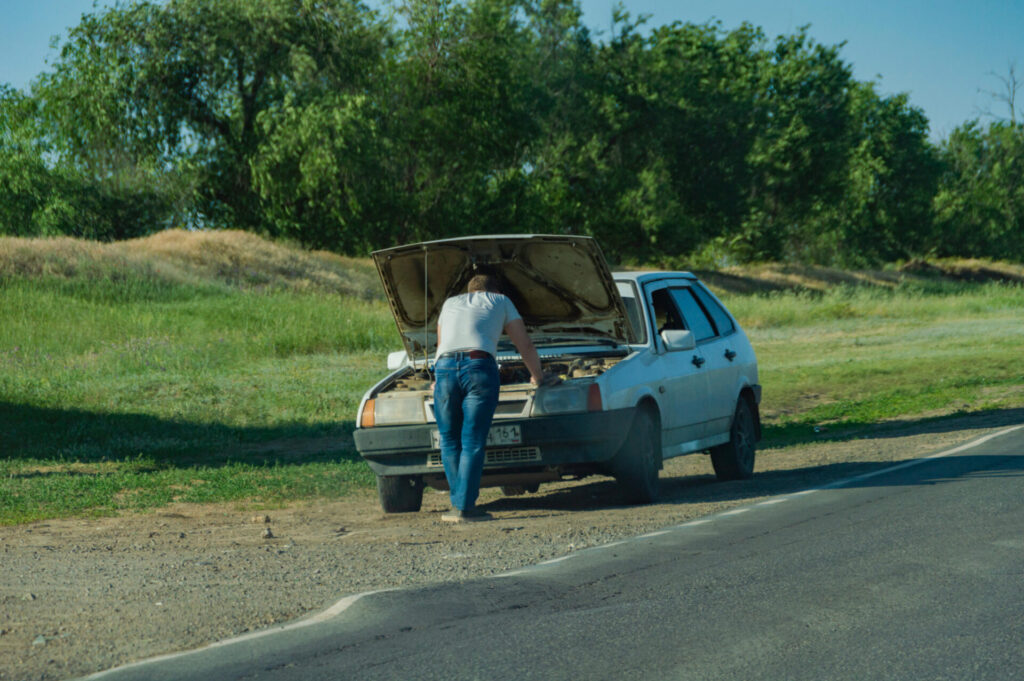
Just as the finest performers may occasionally stumble over a line or be late for an entry, so too can we experience burnt and dry hits even when trying our best to avoid them. Rest assured that there are solutions to get things running smoothly again. We’ll explore some typical problems and their respective fixes regarding these unpleasant vaping experiences.
Correcting E-Liquid Problems
Just like an inadequate screenplay can cause a bad show, selecting the incorrect kind or consistency of e-liquid may culminate in dry hits and might also expose users to dangerous chemicals. By grasping these problems and implementing the required adjustments, these disagreeable occurrences can be prevented.
Adjusting Vaping Habits
Occasionally, just as an actor’s performance may suffer due to flawed technique, modifying one’s vaping practices can avert dry hits and prolong the lifespan of the coil.
This includes limiting oneself to shorter puffs at lesser frequencies and ensuring that there is sufficient time for the wick to absorb liquid in between inhalations.
Device and Coil Checks
Similar to how a director ensures the set and props are ready before a performance, vapers should inspect their device and coil. This step is crucial for pinpointing problems that might lead to dry hits, enabling them to make any required adjustments or change-outs.
Alternative Vaping Practices to Avoid Burnt Hits
In the realm of theater, innovation is a constant pursuit. This concept applies equally to vaping where exploring different techniques can prevent the dreaded repetition of experiencing a burnt hit.
Exploring Different Coil Types
Much in the way a director auditions various actors for a part, vapers have the opportunity to experiment with diverse types of coils. The selection ranging from mesh to ceramic, and bottom vertical coils provides distinct benefits aimed at minimizing the likelihood of burnout.
Considering Pod Systems
Similarly to how advanced technologies in theaters can improve a show, pod systems are designed to help avoid burnt hits by featuring integrated coils and fixed wattage settings that lower the risk of overheating and dry hits.
The Shift to Lower Power Vaping
Just like certain performers are adept at delivering understated, nuanced acting, some individuals who vape might find that vaping at a lower power could thwart dry hits and boost the flavor quality, thereby improving their overall enjoyment of the vaping experience.
Summary
In the theater of vaping, burnt hits are the villains we all want to avoid. By understanding their causes, recognizing the signs of coil damage, and adopting proper maintenance and vaping practices, we can keep the show running smoothly. Remember, the key to a great performance is preparation, practice, and the right tools.
Frequently Asked Questions
What does a dry hit feel like?
When vaping, a dry hit occurs when the wick lacks sufficient e-liquid, resulting in an unpleasant taste and a hit devoid of vapor.
Why is my vape burnt when I just got it?
To ensure that the wick in your new vape doesn’t burn, begin using it at a wattage setting at the lower spectrum of what’s recommended for the coil. This precaution helps prevent the wick from overheating and ultimately burning.
By appropriately adjusting your device’s wattage settings, you can steer clear of this problem.
Is a coil ruined after a dry hit?
Yes, a dry hit can ruin a coil by causing the wicking material to burn, resulting in a burnt taste and potential irreparable damage to the coil.
How do you fix a dry hit on a vape?
In order to rectify a dry hit when using your vaporizer, confirm that the tank contains an adequate amount of liquid and give enough time for the coil to soak up the juice prior to activating it.
Implementing these steps should swiftly address the problem.
How can I prevent dry hits?
To avoid dry hits, make certain that your wick is thoroughly saturated before use. It’s also essential to operate your device at the proper wattage settings and give the wick ample time to re-saturate after each puff.



